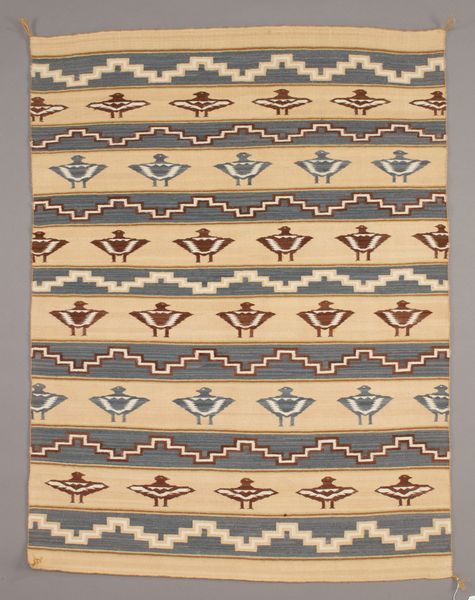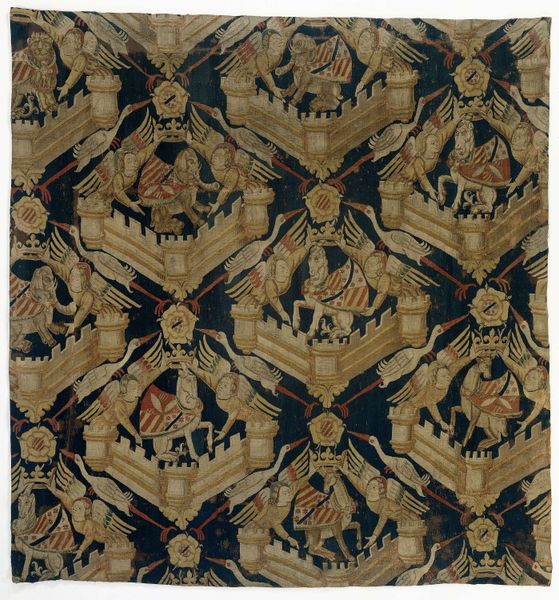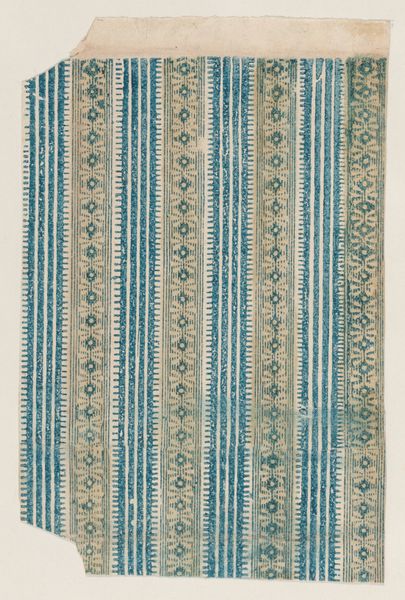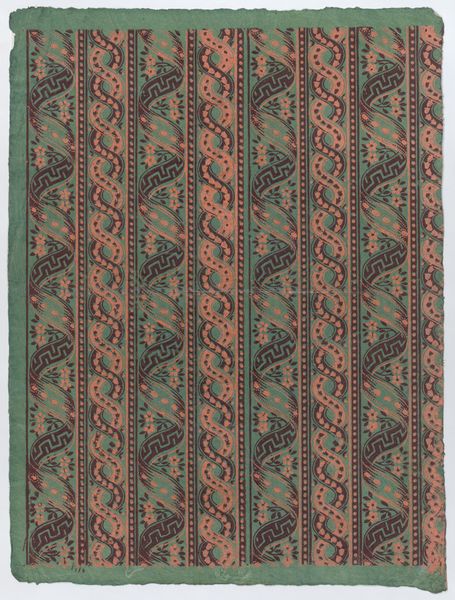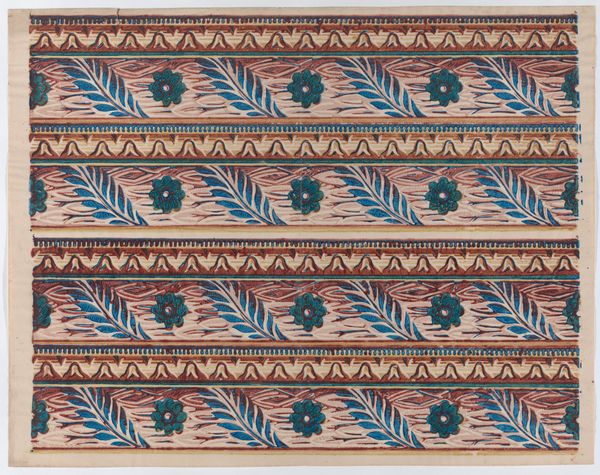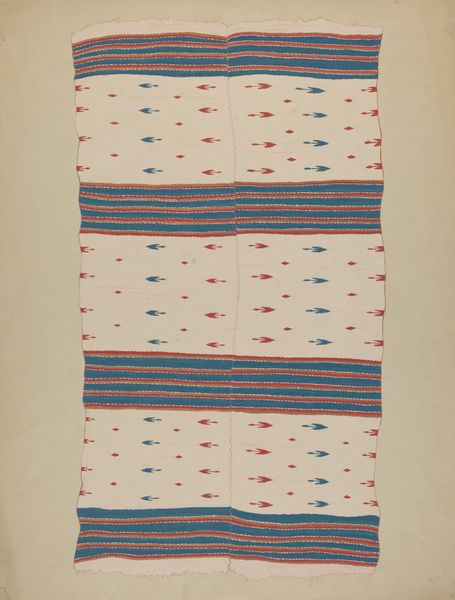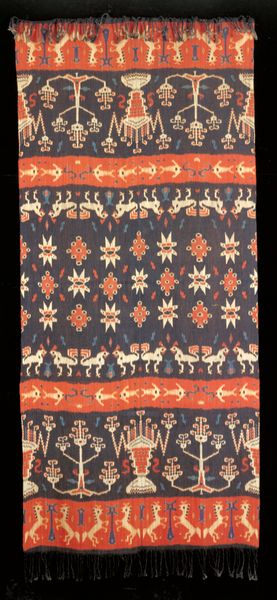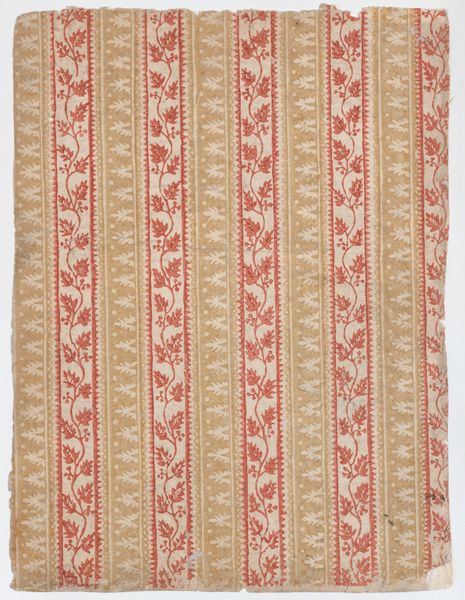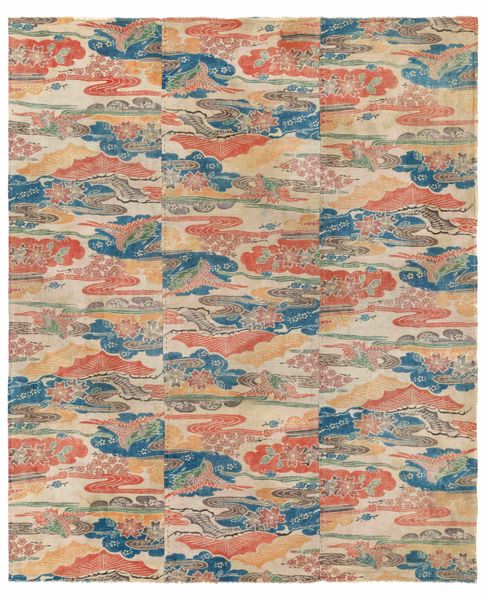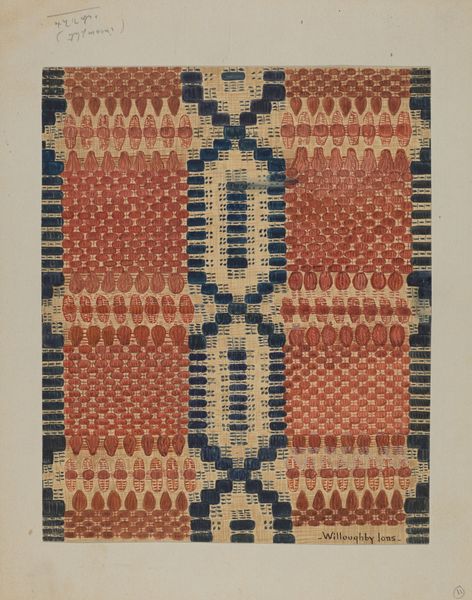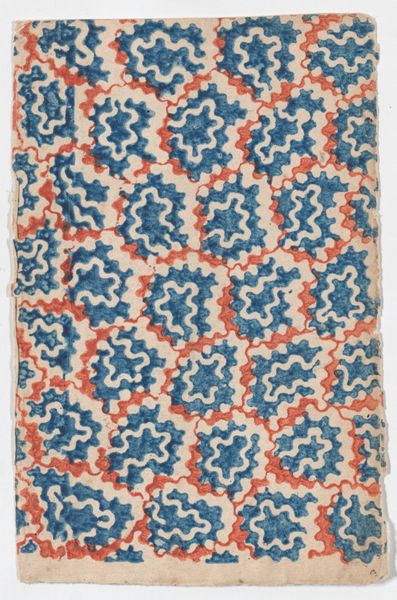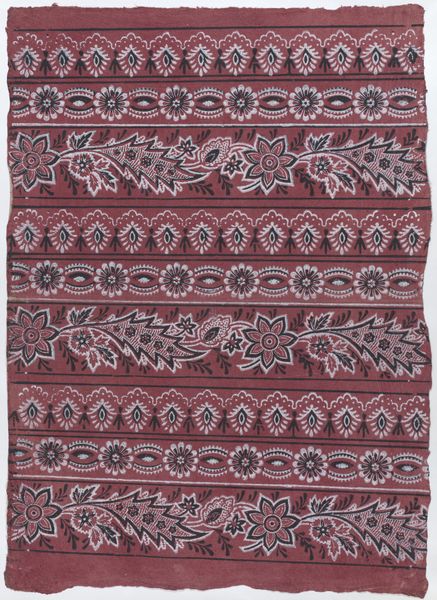
drawing, print, textile
#
drawing
# print
#
textile
#
geometric
#
decorative-art
Dimensions: Sheet: 7 3/16 × 4 1/8 in. (18.2 × 10.4 cm)
Copyright: Public Domain
Curator: Ah, here we have an intriguing piece from the Metropolitan Museum's collection: an anonymous "Sheet with abstract and stripe pattern," likely created sometime between 1800 and 1900, employing a combination of drawing and print techniques, suggesting a textile design perhaps. Editor: My first thought? Hypnotic! It’s a little dizzying actually, in a playful way. All those stripes and those… are those supposed to be flowers? They kind of remind me of stylized eyes staring back. Curator: Indeed, the repeating floral or “eye-like” motifs are quite striking. Patterns such as these carry cultural weight, influencing the observer subconsciously with repetitive visual stimuli and establishing collective aesthetic value over long spans of time. It's not simply decoration, is it? But how does this abstract design connect to earlier traditional motifs and its contemporaries? Editor: Not at all. It almost feels subversive. Look at how those muted browns and blues fight against the floral design—it's like a beautiful glitch in the system. Or perhaps an industrial landscape masquerading as a garden, hinting at the shift from nature to mass-produced aesthetics and social experiences. Curator: A rather astute observation, given the period. Remember, textile design was increasingly influenced by technological advances then. And the very act of repetition has deep-rooted symbolic meanings depending on one's culture. Do we have continuity or divergence of form within our collective aesthetic memory? Editor: Hmmm. I find it intriguing because it manages to feel both old and surprisingly modern at the same time. It looks almost digital—like early computer graphics attempting organic forms! It makes you wonder, what did this aesthetic pattern mean to someone? Maybe this "hypnotic" feel wasn’t fully understood or appreciated back then! Curator: Well, whether this artwork evokes organic gardens, proto-digital aesthetics, continuity, divergence, glitch or disruption for the viewer, its capacity to conjure different historical and psychological connections speaks volumes. Editor: Exactly! It's got that special something. I can't help but think this design deserves another look, perhaps repurposed or reinterpreted by today's design provocateurs. Curator: Yes, perhaps its time has come to be re-evaluated.
Comments
No comments
Be the first to comment and join the conversation on the ultimate creative platform.
